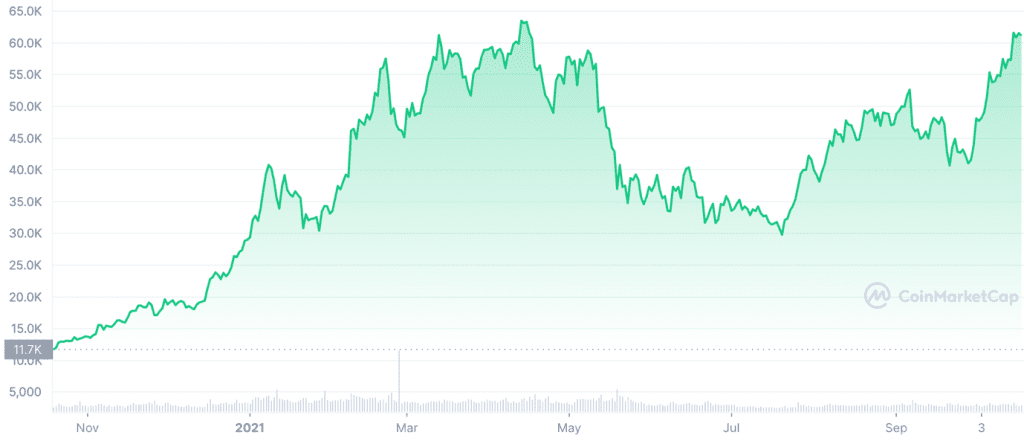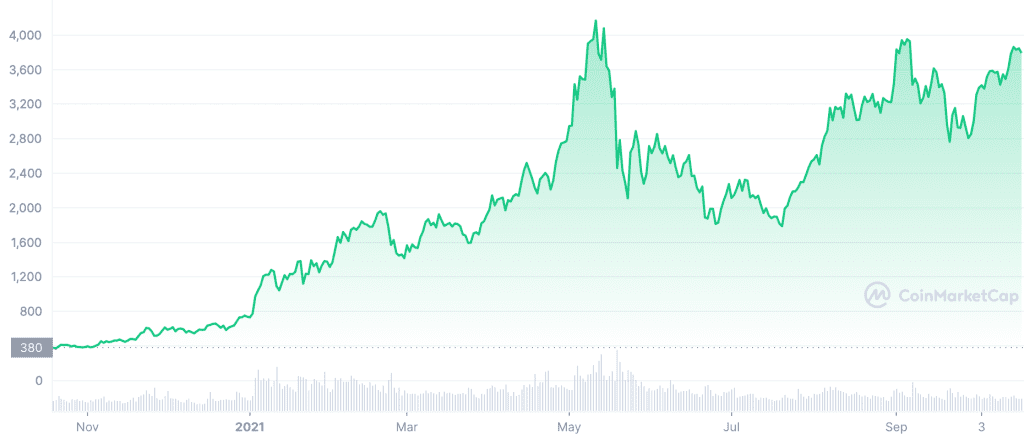Complete Guide to Hedging Your Crypto Trades
As digital assets (virtual currency) exchangeable between parties, cryptocurrencies bear the characteristics of financial instruments – even though they are not recognized as such under the United States Generally Accepted Accounting Principles (GAAP). They are impacted by market forces, as well as economic, political, and perhaps environmental factors (as was the case with China’s ban on crypto mining).
Further, they also bear characteristics specific only to them that make crypto trading a risky undertaking. From the inherently volatile nature of crypto assets to their unregulated nature in multiple jurisdictions, cryptocurrency trading carries plenty of risks. The risks increase the need for risk management strategies, one of which is known as cryptocurrency hedging. This can make it helpful to consult market analysis done by professionals, like the ones in MYC's free telegram crypto group.
In this article, we will discuss how you can hedge your crypto trades, thereby protecting them against possible losses. Specifically, we will describe what hedging crypto is, the risks associated with crypto trading, crypto hedging strategies such as short-selling, and the advantages and disadvantages of crypto hedging. Let’s get started.
What is Hedging?
A standard portfolio protection method, hedging is a useful practice for investors and traders alike. It is a strategy whereby a trader manages the risk by taking an opposite position in another related asset, this offsetting the downside risk of any adverse price movements or cryptocurrency market downturns. Typically, it entails trading in another asset. It is important to note that the mechanics of hedging differ from one financial instrument or particular asset to another.
Nonetheless, the underlying similarity among all assets is that hedging reduces the profits/returns a trader can make.
Seen as insurance against unforeseen adverse events and undesirable market conditions that could lead to losses, hedging is common in financial markets where stocks, currencies, and futures are traded. The usefulness and need for hedging arise from the fact that the value of these financial instruments could be affected by factors such as news, regulatory changes, announcements by companies or governments, and more.
Cryptocurrency Hedging
When it comes to crypto hedging, a trader might insure against possible losses by initiating two or more trades involving different assets. Alternatively, they might decide to hold a long position in one asset, say, Bitcoin, and a short position in Ethereum. More about these and other strategies in subsequent sections. First, let’s focus on the risks that necessitate the use of crypto hedging strategies.
Risks of Crypto Trading
The following risk factors call for cryptocurrency hedging strategies as the go-to risk management practice:
- Volatility
- Unregulated asset
- Potential for hacks and fraud
- Blockchain forks and discontinuations
- Bitcoin dominance
- Irreversible transactions
Volatility
Crypto prices have increased over the past few months. Bitcoin, for instance, whose value was less than $42,000 on September 29, is now the closest it has ever been to its earlier high during the April bull run, as of the writing of this article. According to CoinMarketCap, on the morning of October 18, the value of the world’s largest cryptocurrency was $62,239.19. Similarly, Ethereum rose from less than $2,900 on September 29 to its October 18 price of around $3,860.
To an inexperienced crypto trader, these dramatic price increases might point to potential profits, but herein lies a problem. The price trends for each of the cryptocurrencies show fluctuations that embody the inherent volatility of this class of assets. Between the April and current October bull run, Bitcoin and Ethereum both tanked, with prices oscillating unpredictably – with huge price fluctuations – as shown in the charts below.
Figure 1: 1 Year Bitcoin Price Chart Up To October 18 (Source: CoinMarketCap)
Figure 2: 1 Year Ethereum Price Chart Up To October 18 (Source: CoinMarketCap)
The crypto market volatility complicates price predictions in addition to negatively impacting long-term positions.
Unregulated Assets
Firstly, cryptocurrencies are not categorized as financial instruments under the United States Generally Accepted Accounting Principles (GAAP). Secondly, cryptocurrencies are directly regulated by central banks or most governments around the world, except for El Salvador, which made Bitcoin legal tender in the country.
The unregulated nature of cryptos means that they are not protected from manipulative trading practices and other fraudulent activities. This means that crypto traders may be at the mercy of selfish initiatives. For instance, the Dogecoin rally earlier this year that was influenced by social media hype mainly benefited those behind the push.
Potential for Hacks and Fraud
Earlier this year, $3.6 billion worth of Bitcoins were lost in a case of a crypto investment firm turned scam. More recently, in October, Coinbase, the second cryptocurrency exchange by trade volume, according to Coin Market Cap, reported that its platform had been compromised in a hack that took place between March and May this year. As a result, at least 6,000 customers had funds removed from their accounts.
These are just two examples of hacks and fraud associated with cryptocurrency trading, increasing the risks associated with the digital asset.
Blockchain Forks and Discontinuation
A split in the blockchain network causes a blockchain fork. The split results from a misalignment between miners’ software due to updates. When the miners cannot agree upon the type of blockchain software to continue using, they form two or more versions of the original blockchain. The forks increase the price volatility of the assets.
Bitcoin Dominance
Bitcoin has a substantial influence on the cryptocurrency market. The prices of other digital coins are directly influenced by and follow trends set by Bitcoin. Market dominance is calculated as a ratio of a particular coin’s market capitalization to the total market capitalization of all cryptocurrency assets. With Bitcoin’s dominance, currently, at around 47% (compared to Ethereum’s 18%), it is easy to see why Bitcoin commands such influence.
Irreversible Transactions
Cryptocurrency transactions are irreversible unless the recipient decides to initiate a new trade. This means that crypto trades have a permanence, which compels crypto traders to think deeply and analyze the cryptocurrency market before entering a trade. Simply, there’s no room for mistakes. This fact adds to the riskiness of crypto trading.
Crypto Hedging Strategies
You can protect your crypto holdings by employing the following cryptocurrency hedging strategies:
- Short-selling
- Derivatives: futures, perpetual swaps, contract for differences (CFD), and options
- Diversifying portfolio
Short-selling
Short-selling refers to a strategy whereby a trader sells a digital asset when they speculate that its price will reduce. They do this in order then to purchase the same asset at a reduced price once the value finally drops.
Futures
Futures contracts are a class of derivatives – bets on the future value of cryptocurrencies – along with Contract for Difference (CFDs), perpetual derivatives, and options. At its core, a futures contract is an agreement between two or more players who take to buy or sell a particular crypto asset in the future at an agreed-upon time (expiration date).
Futures are popular among cryptocurrency traders, judging by real-time data showing over $16.4 billion in daily trading volumes.
When used as a crypto hedging strategy, bitcoin futures or cryptocurrency futures contracts enable traders to maximize their returns by simply maintaining an open position. In trading, a position refers to a trade that could lead to either a loss or profit or one that has already been cancelled/closed. When a trader enters a trade, the trade is said to be an open position, while if they leave a trade, the trade is considered a closed position.
Perpetual Swaps
Perpetual swaps operate by enabling crypto traders to speculate on future prices of cryptocurrencies. Unlike futures, they do not feature an expiration date on the contract. This, therefore, means that they do away with the requirement to redefine new open positions upon closing previously open trades. In this regard, perpetual swaps are anchored on current crypto prices and a funding rate (fee) mechanism that balances long and short positions.
According to data on this class of derivatives, perpetual swaps boast over $180 billion in daily trade volumes. First introduced in May 2016 by the BitMEX cryptocurrency exchange, perpetual swaps have grown in popularity given that they allow traders to realize huge returns from small price movements. They also lower the risk associated with taking large positions because they eliminate expiration dates.
Options
Options are derivative contracts that give the buyer of a cryptocurrency asset the right to buy or sell the underlying asset without obligating them to open the position if they no longer want to. Options allow investors to hedge in crypto by reducing the losses they would actually experience, especially in a bear market.
There are two types of options:
- Put option – offers a buyer the right (but not the requirement) to sell or short-sell a cryptocurrency at a predetermined time and price (known as the strike price)
- Call option – is the opposite of a put option as it enables traders to buy a cryptocurrency asset at a predetermined time and price without obligating them to actually purchase the asset
Traders purchase both put and call options at a fee known as a premium. If, in the case of a call option, the asset’s price is below the strike price at the expiration of the predetermined timeframe, the trader loses the premium.
On the other hand, the value of put options increases as the price of an asset drops.
Contract for Differences (CFD)
Crypto CFD trading is a speculative derivative that allows a trader or investor to speculate on whether the price of a cryptocurrency coin will increase or decrease. It does not require the investor to own the asset. Instead, the trader who undertakes a CFD trade gets paid the difference between the price at entry and the price upon exit if the price moves according to their speculation.
If the trader holds a long position in a cryptocurrency whose prices are declining or are bound to start falling, they could enter a CFD trade. The trade would allow them to earn revenue throughout the price-decline period, thus offsetting the losses they would have otherwise incurred by keeping the long position in the cryptocurrency open as the prices continued dropping (downside risk).
Diversify Portfolio
The proverbial ‘do not put all your eggs in one basket’ also applies to cryptocurrency trading. By holding multiple types of cryptocurrencies, including those traded on decentralized exchanges such as Uniswap Exchange and Monero Atomic Swap, as well as centralized exchanges such as Binance and Coinbase, you can spread your risks, thereby limiting downward losses.
However, the dominance of Bitcoin significantly affects this strategy. Given that Bitcoin prices dictate the price movements of all other cryptocurrencies, diversifying your portfolio may not protect your crypto investments against Bitcoin-related losses.
Advantages and Disadvantages of Crypto Hedging Strategies
Advantages
- Hedging manages risks, thereby protecting a trader’s portfolio
- It offers traders the ability to earn returns without having to own cryptocurrency assets
- It can be used with multiple cryptocurrencies
- Hedging helps lock already accrued profits
Disadvantages
- Hedging reduces the profits a trader would have gained
- Using derivatives presents another risky, loss-making opportunity, especially given that the trader can lose the premium paid; further uninformed hedging strategies could backfire, leading to additional losses
- It requires a trader to constantly monitor trades and prices
Conclusion
Crypto hedging is a valuable risk management practice. Through strategies such as crypto CFD trading, derivatives, short-selling, and diversifying crypto portfolios, traders can mitigate risk, reduce losses, and maximize returns from their open positions. Further to this, crypto hedging offers additional benefits such as the fact that it can be used with multiple assets as well as the ability to earn returns without owning a particular asset (crypto). Another way to help reduce the risk profile of your portfolio is to use signals from professional traders.






